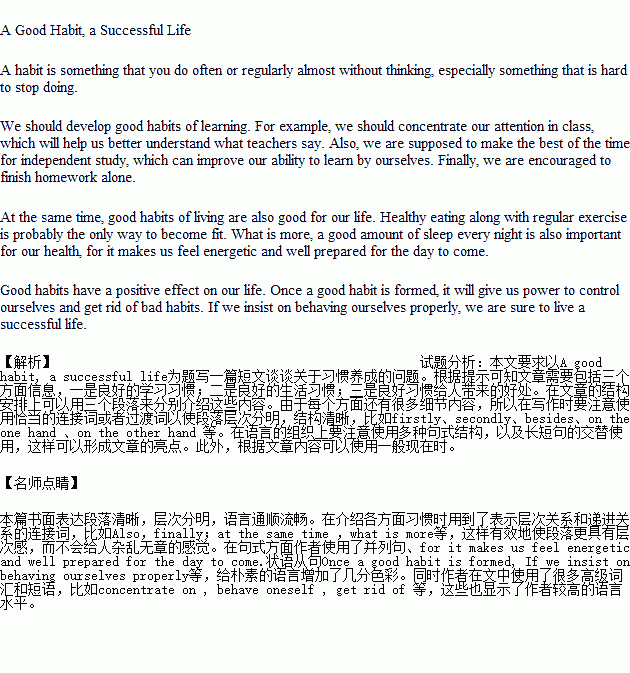��Ŀ����
�������ijУ��ͬѧ�ǵ�ϰ����������չ�������ۡ���������±�����ʾ����Ϣ����Ӣ��дһƪ��ΪA good habit, a successful life �Ķ��ģ������ڸ�У����վ�ϡ�
���õ�ѧϰϰ�� | 1. �Ͽ�ע�������� 2. ������ÿ���ʱ�� 3. ��ʱ�����ҵ�� |
���õ�����ϰ�� | 1. ��������ʳ 2. ���ɵ��˶� 3. �����˯�ߡ� |
�������õ�ϰ�ߵĺô� | ��ϰ�߶������л�����Ӱ�� 2.�� 3.�� (�뿼������������ܲ�������) |
ע�⣺1. ��ͷ�Ѹ�����
2. ���ʵ�����ϸ�ڣ���ʹ�������ᡣ
3. ����100-120��
�γ����õ�ϰ�ߣ�develop good habits of��
���ã�make use of
A Good Habit, a Successful Life
A habit is something that you do often or regularly almost without thinking, especially something that is hard to stop doing.
��ϰ��ϵ�д�
�����Ŀ

